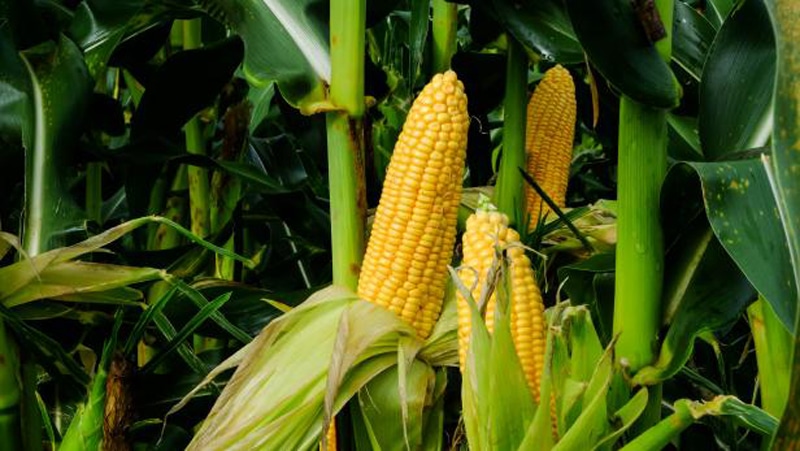Contents
Sweet Corn
Sweet corn, scientifically known as Zea mays var. saccharata, is a type of maize with a high sugar content. Unlike field corn or dent corn, which is grown primarily for livestock feed and industrial purposes, sweet corn is consumed as a fresh or processed vegetable. It is characterized by its tender, sweet kernels and is harvested at an immature stage when the sugars are at their peak.Origins and Cultivation
Sweet corn is believed to have originated in Central America thousands of years ago. It was first domesticated by indigenous peoples, who cultivated and improved its taste through selective breeding. The cultivation of sweet corn gradually spread throughout the Americas and eventually reached Europe after the discovery of the New World. Today, sweet corn is grown in various regions worldwide, including the United States, China, Brazil, and India. It requires warm temperatures and fertile soil to thrive. Farmers plant sweet corn seeds in well-prepared soil and provide adequate irrigation. The crop typically matures within 60 to 100 days, depending on the variety and environmental conditions.Popular Varieties of Sweet Corn
There are numerous varieties of sweet corn available, each with its unique characteristics and flavor profiles. Some of the popular varieties include:- Butter and Sugar: This variety has a combination of yellow and white kernels, offering a balance of sweetness and tenderness.
- Silver Queen: Known for its large, white kernels, Silver Queen is a popular variety prized for its rich, sweet taste.
- Ambrosia: Ambrosia sweet corn features a perfect balance of sweetness and creaminess, making it a favorite among corn lovers.
- Peaches and Cream: With its bi-colored kernels, Peaches and Cream sweet corn offers a delightful combination of sweetness and visual appeal.
Nutritional Value of Sweet Corn
Sweet corn is not only a delicious vegetable but also a nutritious one. It is a good source of several essential nutrients, including:- Carbohydrates: Sweet corn provides energy in the form of carbohydrates, which are essential for fueling our body.
- Fiber: It contains dietary fiber that aids in digestion and helps maintain a healthy digestive system.
- Vitamins: Sweet corn is rich in vitamins A, B, and C, which contribute to overall health and immunity.
- Minerals: It contains minerals like potassium and magnesium, which are important for maintaining proper bodily functions.
- Antioxidants: Sweet corn is packed with antioxidants that help protect the body against harmful free radicals.
Health Benefits of Sweet Corn
In addition to its nutritional value, sweet corn offers several health benefits. Here are some of the benefits associated with consuming sweet corn:- Improved Digestion: The fiber content in sweet corn promotes healthy digestion and prevents constipation.
- Eye Health: The presence of antioxidants and vitamins in sweet corn helps maintain good vision and protects against macular degeneration.
- Heart Health: Sweet corn contains folate and niacin, which support cardiovascular health and help regulate cholesterol levels.
- Weight Management: Sweet corn is low in fat and calories, making it a suitable choice for individuals aiming to manage their weight.
- Skin Health: The antioxidants in sweet corn contribute to healthy skin by protecting against damage from free radicals.
Selecting and Storing Sweet Corn
When selecting sweet corn, look for ears with bright green husks and fresh silk that is light in color. The kernels should be plump and tightly packed. To test for freshness, gently press a kernel with your thumbnail; if it releases a milky liquid, it is fresh. Avoid corn with dry or discolored husks. To store sweet corn, keep it in the refrigerator with the husks intact. Consume it as soon as possible for the best flavor and texture, as the sugars in sweet corn begin converting to starch after harvest, reducing its sweetness.Cooking Methods for Sweet Corn
Sweet corn can be prepared in various ways, depending on personal preference and cultural traditions. Here are some popular cooking methods:- Boiling: Boiling sweet corn is a simple and popular method. Add the ears of corn to a pot of boiling water and cook for 4 to 6 minutes until tender.
- Grilling: Grilling sweet corn imparts a smoky flavor. Remove the husks and silk, brush the ears with butter or olive oil, and grill them over medium heat for about 10 minutes, turning occasionally.
- Steaming: Steaming sweet corn helps retain its natural sweetness. Place the corn in a steamer basket over boiling water and cook for approximately 5 to 7 minutes.
- Roasting: Roasting sweet corn in the oven or on a stovetop produces a caramelized flavor. Coat the ears with oil or butter, sprinkle with salt and pepper, and roast at 400°F (200°C) for 20 to 25 minutes.
Delicious Sweet Corn Recipes
- Grilled Mexican Street Corn: Coat cooked corn with mayonnaise, sprinkle with cotija cheese, chili powder, and lime juice. Serve with lime wedges.
- Corn Chowder: Sauté onions, carrots, and celery in butter. Add diced potatoes, chicken broth, and corn kernels. Simmer until vegetables are tender, then add milk and seasonings.
- Corn and Black Bean Salad: Combine cooked corn, black beans, diced tomatoes, red onion, cilantro, and lime juice. Season with salt, pepper, and cumin for a refreshing salad.
Sweet Corn in Different Cuisines
Sweet corn finds its way into various cuisines worldwide. Here are a few examples:- Mexican Cuisine: Mexican street corn, also known as elote, is a popular Mexican street food that features grilled corn on the cob topped with mayo, cheese, and spices.
- American Cuisine: Sweet corn is a staple in American cuisine, often enjoyed at summer barbecues and as a side dish.
- Asian Cuisine: In Asian cuisine, sweet corn is used in stir-fries, soups, and rice dishes, adding a touch of sweetness and texture to the recipes.
รู้ไหม ? ข้าวโพดมีประโยชน์มากแค่ไหน…
Sweet Corn FAQ
- Q: Can I freeze fresh sweet corn?
- Yes, fresh sweet corn can be frozen. Blanch the ears of corn, remove the kernels, and store them in airtight freezer bags for up to 6 months.
- Q: Is sweet corn genetically modified (GM)?
- Some varieties of sweet corn are genetically modified, but non-GM options are also available. Look for organic or non-GMO labels if you prefer non-GM sweet corn.
- Q: Can I eat sweet corn raw?
- While sweet corn is usually cooked before consumption, it can be enjoyed raw. However, cooking helps enhance its flavor and texture.
- Q: Is sweet corn a vegetable or a grain?
- Sweet corn is technically a grain, but it is commonly referred to as a vegetable due to its culinary uses.
- Q: Can sweet corn be included in a gluten-free diet?
- Yes, sweet corn is naturally gluten-free and can be enjoyed as part of a gluten-free diet.
Conclusion
Sweet corn is a delightful vegetable that brings sweetness and vibrancy to numerous dishes. Whether you enjoy it fresh off the cob, grilled, or in a flavorful recipe, sweet corn offers not only a delicious taste but also nutritional benefits. Its origins, cultivation, varieties, and versatile cooking methods make it a popular choice among food enthusiasts worldwide. So, indulge in the goodness of sweet corn and explore the diverse culinary possibilities it offers.Can I Use Sweet Corn in My Homemade Tomato-Based Spaghetti Sauce?
When experimenting with your homemade spaghetti sauce recipe, you may wonder if sweet corn is a suitable addition. While some unconventional ingredients can enhance the flavor profile, adding sweet corn to a tomato-based spaghetti sauce may not harmonize well. Stick to traditional ingredients like herbs, vegetables, and spices for best results.
FAQs
- Q: Where can I get fresh sweet corn?
- You can find fresh sweet corn at local farmers’ markets, grocery stores, or even consider growing it in your own garden.
- Q: What are some other names for sweet corn?
- Sweet corn is also known as sugar corn, pole corn, and simply as corn in some regions.
- Q: Can I use canned sweet corn instead of fresh corn?
- While fresh sweet corn is preferred for its taste and texture, canned sweet corn can be used as a convenient alternative in certain recipes.
- Q: Are there any allergenic concerns related to sweet corn?
- Allergies to sweet corn are rare, but individuals with corn allergies should avoid consuming it.
- Q: How can I add sweetness to my corn recipes without using sugar?
- You can enhance the sweetness of corn by adding a squeeze of citrus juice, such as lime or lemon, or using natural sweeteners like honey or maple syrup.







